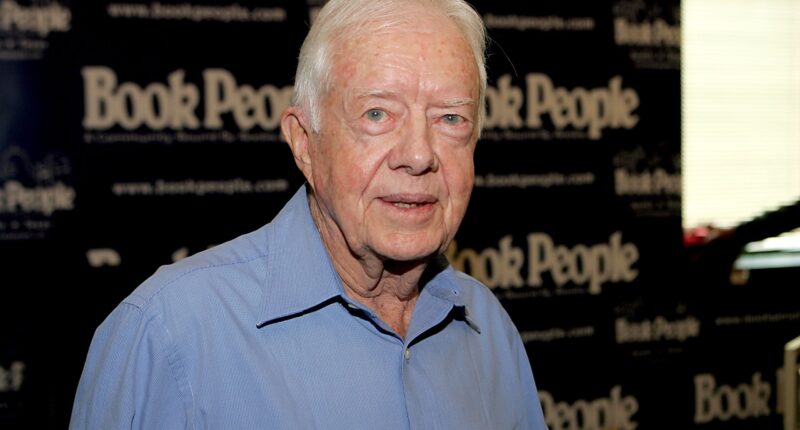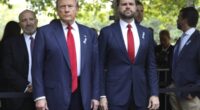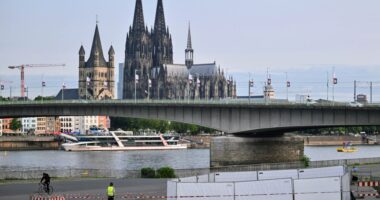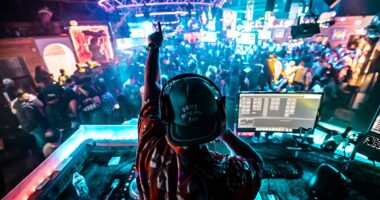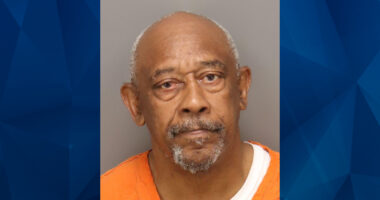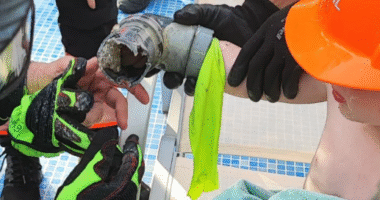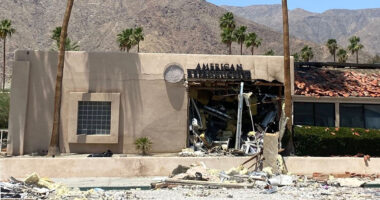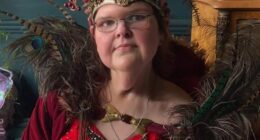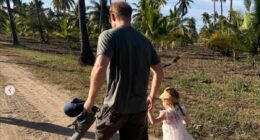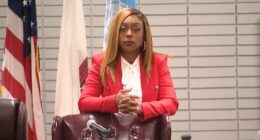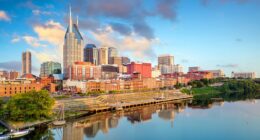ALL it took was three words: “Howay the lads!” for Britain to fall in love with President Jimmy Carter.
He was in Newcastle when he won over a crowd of 20,000 with the Toon Army’s most famous chant.



But it took the rest of the world many more years to appreciate the greatness of the longest-living US leader ever, who has died aged 100.
Following the Watergate scandal, which led to Republican President Richard Nixon resigning from office, the Democratic candidate Carter was poised to narrowly defeat Nixon’s replacement, former Vice President Gerald Ford.
To present himself as a political outsider and a relatable figure, Carter granted an interview to the adult magazine Playboy. In the interview, he confessed to having “committed adultery in his heart on multiple occasions.”
Carter’s reference to sex became all anyone could talk about.
The interview shifted the entire dynamic of the election — and helped get the Republicans back on track.
Many evangelical Christians in Carter’s southern heartland turned against him.
Despite the setback, Carter won the 1976 election to become 39th United States President at the age of 52.
During his inaugural speech in January, he addressed the nation, stating, “Your strength can make up for my weaknesses, and your wisdom can assist in reducing my errors.”
But his one term in the White House was notorious for fiascos ranging from a self-inflicted 444-day hostage crisis to an incident when he managed to get attacked in a pond by a swimming rabbit.
It was seen as not only humiliating for the former peanut farmer, but for the entire United States.
However, after losing office, he redefined what it meant to be an ex-President, becoming one of history’s great peacemakers.
In fact the Nobel Peace Prize winner became one of the finest presidents in American history — after he left the White House.
James Earl Carter Jr was born on October 1, 1924, in the one-street town of Plains, Georgia, in America’s Deep South.
He grew up on his father’s peanut farm and worked on it from the time he was able to carry buckets of water.
Jimmy set his sights on a career with the US Navy, in order to receive free college education to study engineering.
And it was while at the Naval Academy that he fell in love with a former neighbour, Rosalynn, his sister’s best friend.
They married on July 7, 1946, when he was 21 and she was 18, and they were together for the next 77 years until Rosalynn’s death last November, age 96.
Marking their 75th wedding anniversary in 2021, Carter said: “I love her more now than I did to begin with — which is saying a lot, because I loved her a lot.”
He vowed to stay alive so that Rosalynn would never have to live alone.
Carter was relishing being part of the Navy’s brand-new nuclear submarine program in New York when his father died in 1953 changing the whole course of his life
The 28-year-old felt duty-bound to quit the Navy and return to Plains with Rosalynn and their three sons to take over the family business.
As a leading member of the evangelical Baptist Church, he quickly became a pillar of the community — until a ruling by the Supreme Court changed everything.
Most spectacularly, he began trying to revive the Middle East peace process — and succeeded
In 1954, judges declared racial segregation of schools unconstitutional and the South went into uproar.
In Plains a White Citizens’ Council was set up and Carter was the only white man in town who refused to join.
There was a boycott of the peanut business, and banishment from the country club.
The attendant at the petrol station even refused to fill his car.
But Jimmy Carter had not gone into politics — politics had come to him.
The following year he joined the county’s school board and gradually became more outspoken on race.
Then in 1962 he ran for Georgia’s state senate as a Democrat.
After his senate stint, in 1970 he became Governor, declaring in his inaugural speech: “The time of racial discrimination is over.”



By late 1974 he had become known for compassion and competency, in a United States despairing over crooked ex-President Richard Nixon and the Vietnam War.
Still, he did not seem the White House type.
Years later Carter recalled: “When I told my mother I was running for president, she said, ‘President of what?’”
And when he announced his candidacy for the 1976 election, the reaction was: “Jimmy who?”
With the reputation of Washington insiders at an all-time low, the outsider captured the public imagination
It turned out to be a gift.
With the reputation of Washington insiders at an all-time low, the outsider captured the public imagination.
He was sworn as President on January 20, 1977, and things started well.
One of his first acts was to declare an amnesty for Vietnam War draft evaders.
He also installed solar panels on the White House and established the United States’ first federal Department of Education.
Most spectacularly, he began trying to revive the Middle East peace process — and succeeded.
Patient negotiations led to a secret summit in September 1978 between the leaders of warring Israel and Egypt at Camp David, the presidential retreat.
It was meant to last three days and ended up taking 12.
Egyptian President Anwar Sadat and Israeli PM Menachem Begin started out refusing to even be in the same room.
By the end, they were watching movies together and had the framework for a treaty that ended the war.
It remains the only meaningful peace in the Middle East.
But Carter’s standing tended to be higher abroad than at home. Especially in Newcastle.
The President had come to London for a summit in May 1977, and Labour PM Jim Callaghan asked if there was any where he would like to visit.
Carter said he would love to see Laugharne in Carmarthenshire, where his favourite poet Dylan Thomas had lived.
But wily Callaghan confided that choosing Tyneside instead would be helpful in shoring up Labour support.
Air Force One headed north.
On the drive to the city centre, Carter noticed a newspaper poster reading “Howay Jimmy”, and another one referring to “the lads”.
He asked what all this meant and got a history of Newcastle United’s call to arms.
By the time he took to the stage outside the Civic Centre, he had decided on his opening words.
The Sun reported that the President’s “Howay the lads!” was greeted with “the sort of roar you get for a five-goal win at Newcastle’s St James’ Park”.
Carter would later say: “The expected friendly and polite welcome became a love fest.
“This was one of the high points of my first year as president.”
That UK visit also had an unlikely impact at Westminster Abbey.
Because he could not get to Laugharne, Carter visited the Abbey to see Dylan Thomas’s memorial in Poets’ Corner.
But when the President asked an archdeacon to point out the stone, he was told: “We couldn’t have Dylan Thomas commemorated here — you know he was a drunkard.”
Carter replied: “Well look, there’s Lord Byron who was gay. There’s Edgar Allan Poe, who was a drug addict.”
Still fuming, back home he wrote a letter outlining the poet’s case.
In 1982 a memorial was finally unveiled.
But in the US, inflation and a petrol shortage were uppermost in voters’ minds.
Carter appeared weak, summed up in September 1979, when he collapsed gasping for air into the arms of minders half-way through a six-mile jog.
But worse was to come in October that year when in a misguided humanitarian gesture, Carter invited the embattled Shah of Iran to have cancer treatment in the US.
Iranians who had been trying to overthrow the royal’s rule and establish a republic were enraged.
On November 4, 1979 students stormed the US Embassy in Tehran, taking those inside hostage.
Fifty-two Americans would be held for the next 444 days.
Carter’s inability to win their release scuppered his reputation for negotiation.
A rescue mission also failed, and Carter refused popular calls to simply bomb Tehran.
He was awarded 2002’s Nobel Peace Prize – the only US President to ever get the honour after leaving office
All this unfolded in the run-up to the November 1980 election, with macho Republican challenger Ronald Reagan branding Carter a “wimp”.
The President lost to Reagan in a landslide.
Minutes after the new President was sworn in, the hostages in Iran were released.
Meanwhile Carter and Rosalynn, along with 13-year-old daughter Amy, moved back to the bungalow in Plains that the family had built in 1961.
The political outcast announced that he would not take jobs on corporate boards or pile up money on the lecture circuit.
Instead, he went back to teaching Sunday school, and quietly set about changing the world.
In 1986 he announced his life goal was to help eradicate Guinea worm disease, which was striking 3.5million people in Africa each year.
In 2021, that was down to 14 cases.
It is on track to being only the second human disease in history to be eradicated after smallpox.
Then in 1994, when it seemed war was about to erupt between North and South Korea, President Bill Clinton remembered Carter’s magical touch with the Middle East.
Carter flew in to meet with leader Kim Il Sung, and got on so well they ended up hugging.
The intervention helped to seal a nuclear disarmament agreement that lasted nearly a decade.
He was awarded 2002’s Nobel Peace Prize – the only US President to ever get the honour after leaving office.
Despite his age he carried on building homes for the poor – often working on them himself but the Secret Service banned him from going on the roof because he was at risk of assassination by snipers.
And at home in their two-bedroom bungalow, he and Rosalynn read a chapter of the Bible to each other each night, as they had done for more than 40 years.
During the day the couple rode around on three-wheeled scooter the former president said “gives you a workout all the way from your ankles up to your shoulders” — for up to 2.5 miles a day.
In accordance with his wishes, President Carter will be buried in front of his smallholding worth £150,000 – less than the value of the Secret Service car that always parked outside for his protection.
He explained: “Plains is where our hearts have always been.”

RABBIT INCIDENT
JIMMY CARTER did not always have the best luck — but it was never worse than one day in April 1979 when he went out fishing on a boat and got attacked by a swimming rabbit.
News reports quoted a witness as saying the animal was “hissing menacingly, its teeth flashing and nostrils flared, and making straight for the President.”
The Washington Post’s front-page headline was “Rabbit attacks President”.
The Associated Press went with “Carter Fights ‘Killer Rabbit’ with Paddle on Fishing Trip”.
Carter later insisted that what actually happened that day on a pond in his hometown of Plains, Georgia, was that “a rabbit was being chased by hounds and he jumped in the water and swam towards my boat.
When he got almost there, I splashed some water with a paddle and the rabbit turned.”
But his press secretary Jody Powell always swore that the animal was “enraged” and “perhaps beserk” and “intent upon climbing into the presidential boat”.
He ((OK, he)) said it was also far larger than normal rabbits so the President was frightened, with good reason.
Cartoons and novelty songs followed, and political enemies who wanted to paint Carter as ridiculous and hapless had a field day.
For the rest of his time in office, Carter avoided being photographed with the Easter Bunny.
